The Ho Chi Minh Mausoleum Complex is one of the more revered places and one of the scintillating historical attractions of Hanoi. It is a huge complex dedicated to keeping the memory of President Ho Chi Minh alive – the iconic leader who went out of his way during Vietnam’s struggle for independence. Other important landmarks in this complex, besides the mausoleum, will also help in getting insight into the country’s history.
Other must-visit places in Ho Chi Minh Mausoleum Complex
Whereas the mausoleum itself may be the centerpiece, there are a few other attractions within this Ho Chi Minh Mausoleum Complex that give insight into Vietnam’s history and culture.
One Pillar Pagoda
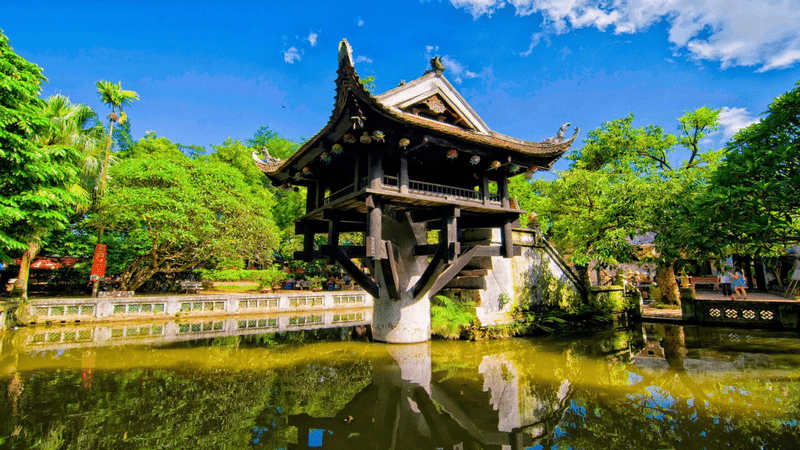
Constructed in the 11th century, it has been rebuilt several times; the present structure dates back to the 1950s. Intricate carvings in the wood with traditional Vietnamese motifs add to the structure. It’s not only a place of worship but also definitely a must for any photographer: reflected beautifully in the surrounding water.
The One Pillar Pagoda is one of the major sights of Hanoi, epitomizing the history of the city and rich Buddhist culture. This wonder, built on top of a single stone pillar, can create, from a bit of a distance, an impression that a lotus flower is growing out of a quiet pond. Location: peaceful oasis in the midst of the bustling city.
Presidential Palace
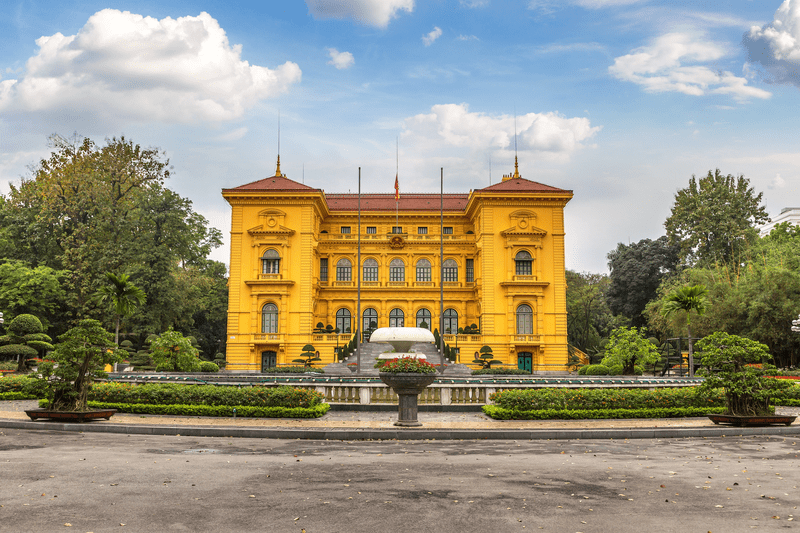
It is an impressive building that used to house the residence of the president of Vietnam. It is just a marvelous mixture between French colonialism and Vietnamese taste. Enter it, and a rich tapestry of the political history of this country awaits you right before your eyes.
Explore the lavish rooms of the palace, intricately decorated and tastefully furnished. Picture the monumental decisions that were made here. Wander through the beautifully manicured gardens that present a serene oasis amid grandeur.
Tours are usually guided, and insightful commentary on the history and significance of the palace is provided. Learn about the main events which shaped the modern era of Vietnam and have a deeper understanding of the leadership of the country.
Ho Chi Minh Museum
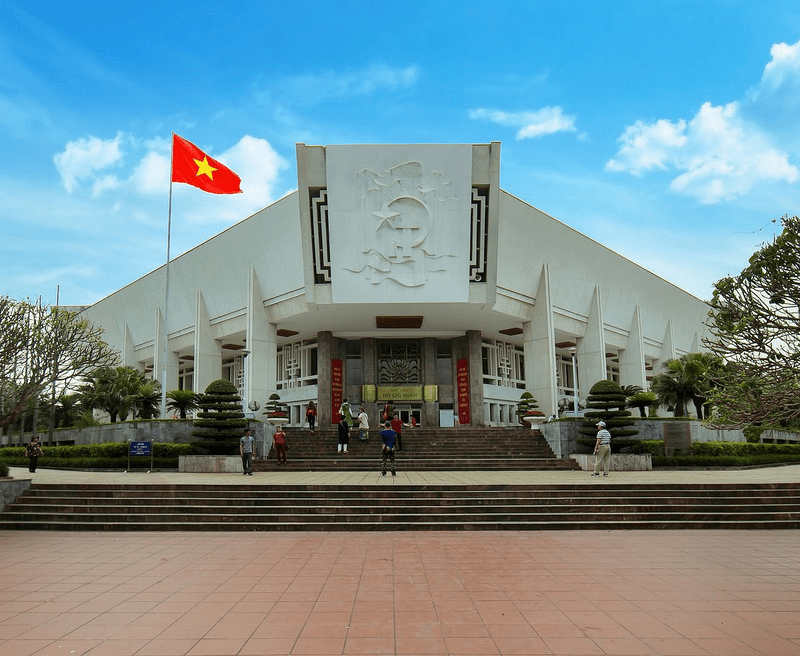
The Ho Chi Minh Museum is an evocative study of the life and times of this beloved leader of Vietnam. This whole museum will harshly illustrate Ho Chi Minh’s process to be a revolutionary man, from his beginning to the shaping of the country.
Take every step with your very own eyes to feel his ideas, sufferings, and victories through interactive displays, personal belongings, historical artifacts, and more. Take a walk through the approach of the exhibition timeline, illustrative of life and important events which have marked the history of Vietnam.
It’s an opportunity to view rare pictures, documents, and the typical personal effects around the daily life of Ho Chi Minh. It also allows the past to be alive right before the eyes of the visitors, bringing them closer to the life of the man and his influence on this country.
House No. 54
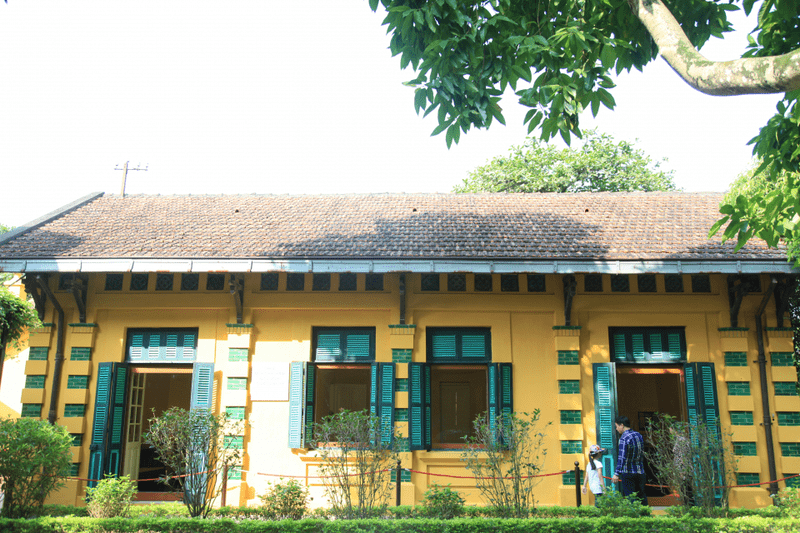
In marked contrast to the mausoleum, you can visit House No. 54. This modest house was Ho Chi Minh’s residence in his later years and provides an exciting insight into the simple life the leader lived.
This humble abode allows one to enter and immerse oneself in the simple life of Vietnam’s beloved leader. Observe the simple furniture, other personal objects, and surroundings as a whole, which make it possible for one to perceive Ho Chi Minh’s dedication to his people and his aversion to frugality.
Take a little moment to reflect on this humble home; the contrast of which speaks volumes of the humbleness of a leader, closely linking him with his people and in service to the nation.
Ho Chi Minh’s House on Stilt
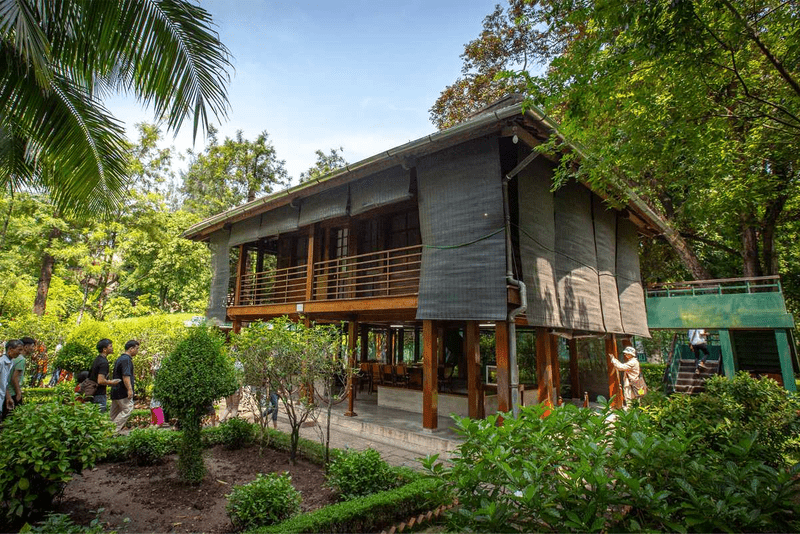
Get back to nature at Ho Chi Minh’s Stilt House. Just imagine such a symbolic structure, stilted amidst a green surrounding, recreating the simplicity and harmony of the president’s lifestyle.
This is built in the traditional Vietnamese style and provides a peaceful retreat from the city. More or less, this became the workplace and resting-place for Ho Chi Minh. Take a tour of the inside to understand how he spent his days. The house is well-preserved to give a feel of its originality so that visitors could imagine the presence of the leader.
Added to this is also a fine garden surrounding the house, good for casual walks. Take a minute to enjoy the serenity and be one with nature as Ho Chi Minh did.
Specific directions to Ho Chi Minh Mausoleum
The Ho Chi Minh Mausoleum is located at 2 Hung Vuong Street, Ba Dinh District, Hanoi. Here are specific directions from popular starting points:
From Noi Bai International Airport
- Best mode of transport: Taxi or private car.
- Distance: Approximately 30-45 minutes, depending on traffic.
- Directions: The mausoleum is located in the city center, so most taxi drivers will know the way. Otherwise, you could turn to a ride-sharing app to travel more easily to the site.
From Hanoi Railway Station
- Best mode of transport: Taxi or bus.
- Distance: Approximately 5-10 minutes by taxi.
- Directions: The mausoleum is relatively close to the railway station. A taxi will be the fastest and most convenient, but you could also use a bus. Just look up the routes of buses which pass near the mausoleum.
From Old Quarter
- Best mode of transport: Walking, bicycle, motorbike, or taxi.
- Distance: Approximately 2-3 kilometers.
- Directions: You can walk to Hanoi’s Old Quarter from the mausoleum, or rent a bicycle or motorbike to get there. If you want to be there fast, take a taxi.
From West Lake
- Best mode of transport: Taxi or motorbike.
- Distance: Approximately 5-10 kilometers, depending on the specific location.
- Directions: Well, West Lake is a huge area, so the exact distance depends on which one that will be chosen. It will be easier by taking a taxi or motorbike from there to the mausoleum area.
From Sword Lake
- Best mode of transport: Walking, bicycle, or taxi.
- Distance: Approximately 1-2 kilometers.
- Directions: The mausoleum is relatively close to Sword Lake, so walking or cycling would be quite appropriate. If you’d like to get over it much faster, there is always a taxi.
Read more: Ho Chi Minh Mausoleum: A Revered Tribute to Vietnam’s Father
The Top 3 Things to Do on Your Trip to Ho Chi Minh Mausoleum
Check out the following must-do activities for the best of your own visit to the Ho Chi Minh Mausoleum Complex:
Explore the Architectural Structure of The Mausoleum
The mausoleum itself is a great example of Soviet-inspired architecture. Its imposing granite exterior creates an impression from the first look. Since no photos can be taken inside the mausoleum, take a moment to enjoy its grandeur from the outside. Notice the details and the solemn atmosphere that surrounds this building.
Watch the Flag-raising and Lowering Ceremonies
Part of the memorable experience when visiting the complex is to witness the daily flag-raising and lowering ceremonies. These are solemn ceremonies, where the rituals are performed flawlessly and respectably in relation to Ho Chi Minh’s memory. Come early to get a fine vantage point for the flag-raising ceremony.
Visit Other Historic Attractions in The Complex
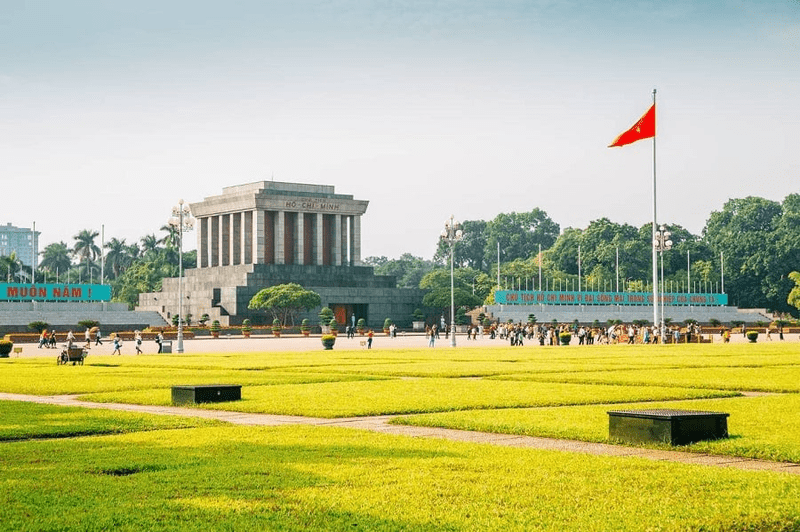
Though other sites in the mausoleum complex are significant in providing information about the past of Vietnam, some time needs to be allocated to see the One Pillar Pagoda, the Presidential Palace, the Ho Chi Minh Museum, and Ho Chi Minh’s Stilt House. At each of these places, visitors get a particular angle from which the country’s history and culture can be perceived.
Read more: Ha Noi Travel: 6 tours in the night for you to discover “the difference of Hanoi”
Note Ho Chi Minh Mausoleum Rules for The Best Visit

Below are some tips to make your visit to the Ho Chi Minh Mausoleum complex respectful and smooth:
- Dress Code: Be presentably respectful. Avoid the use of revealing clothes like shorts, tank tops, and mini-skirts.
- Electronic devices: To maintain the solemn atmosphere, all electronic equipment, including cameras and phones, must be turned off and left outside in designated areas before you enter into the mausoleum. No flash photography or video recording is allowed inside.
- Quiet and respectful behavior: Speak in a low tone and be sober in your manner while visiting. That means you shouldn’t speak loudly or make noise in any way.
- Follow the designated route: Please stay on the tour path and follow the directions of the staff. Do not touch any of the exhibits or artifacts.
This tour of the Ho Chi Minh Mausoleum Complex is a rather thought-provoking visit that embodies a great mix of history, culture, and reverence. It takes each visitor on an almost comprehensive journey through the whole past of Vietnam, from admiring the architectural beauty of the mausoleum to learning about the life of Ho Chi Minh. Of course, remember the guidelines Lily’s Travel gave you and really respect the solemn atmosphere of the site. Your visit will surely stay in your memory forever.















